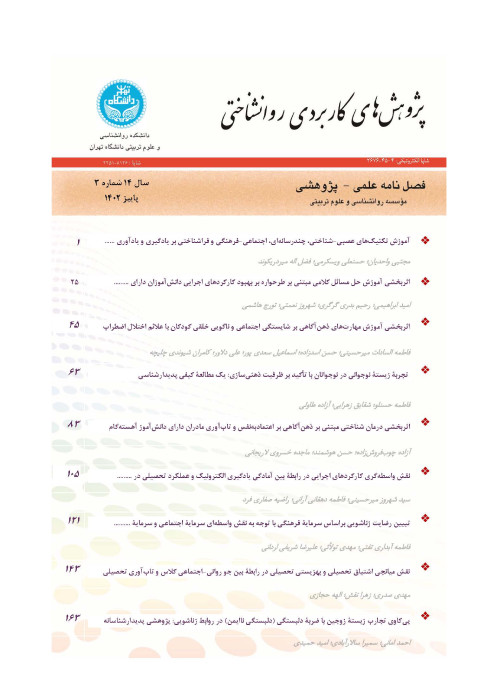Adaptation and Validation of Interpersonal Problem Solving Skills Tools for 4 to 6 year-old children
Problem solving strategies include high-level thinking skills like mental visualization , abstraction, perception and understanding, manipulation, reasoning and analysis. In all of the problem solving models the components of realizing the problem, analizing the problem and representing solution are considered as major components. Whenever people have problem in one or more stages, they may not be able to solve the problem. In problem solving process, children learn to interact with their problems in a way that they don’t feel anxiety and have appropriate reaction with probable defeats. Attending the different aspects of problem solving skill, valid and reliable assessment of this construct seems to be essential. The purpose of this study is to adapt a valid and reliable scale to assess pre-school childrens’ interpersonal problem solving skills. It is a descriptive-analytic study. Statistical population contains all the preschool children of the 6th zone of Tehran in 2015. Sample contains 271, 4 to 6 year-old children. Single-linkage clustering method was used. Criterion validity was analyzed through teachers reports and construct validity was analyzed by the relation of test scores. The Findings illustrate that the present scale has appropriate psychometric properties. Findings contain two main parts, including the validity and reliability of the test. Test-retest reliability illustrates an acceptable correlation coefficient (.71 to .96 ). Descriminative validity is based on the differences between two groups of children with and without behavioral problems and comparing their profiles based on peer-related and mother-related scores. The average score of children without behavioral problem was higher than children with this problem.The comarison of the profiles of the children with and without behavioral problems through multivariate variance analysis shows a significant difference between them (p<.05). Total average of boys answers are more than girls. results indicate that children with behavioral problem choose more verbal and physical forceful solutions in solving their problems. The average of related solutions, categories, enumerations and unrelated solutions in children without behavioral problem in mother problems is more than children with behavioral problem while in repetition we didn’t find any significant difference.Children without behavioral problems offer more solutions and use more categories solving their problems with their mothers. Totally, girls have higher average score in non-forceful solutions and categories and lower average score in forceful and unrelated solutions.
- حق عضویت دریافتی صرف حمایت از نشریات عضو و نگهداری، تکمیل و توسعه مگیران میشود.
- پرداخت حق اشتراک و دانلود مقالات اجازه بازنشر آن در سایر رسانههای چاپی و دیجیتال را به کاربر نمیدهد.


